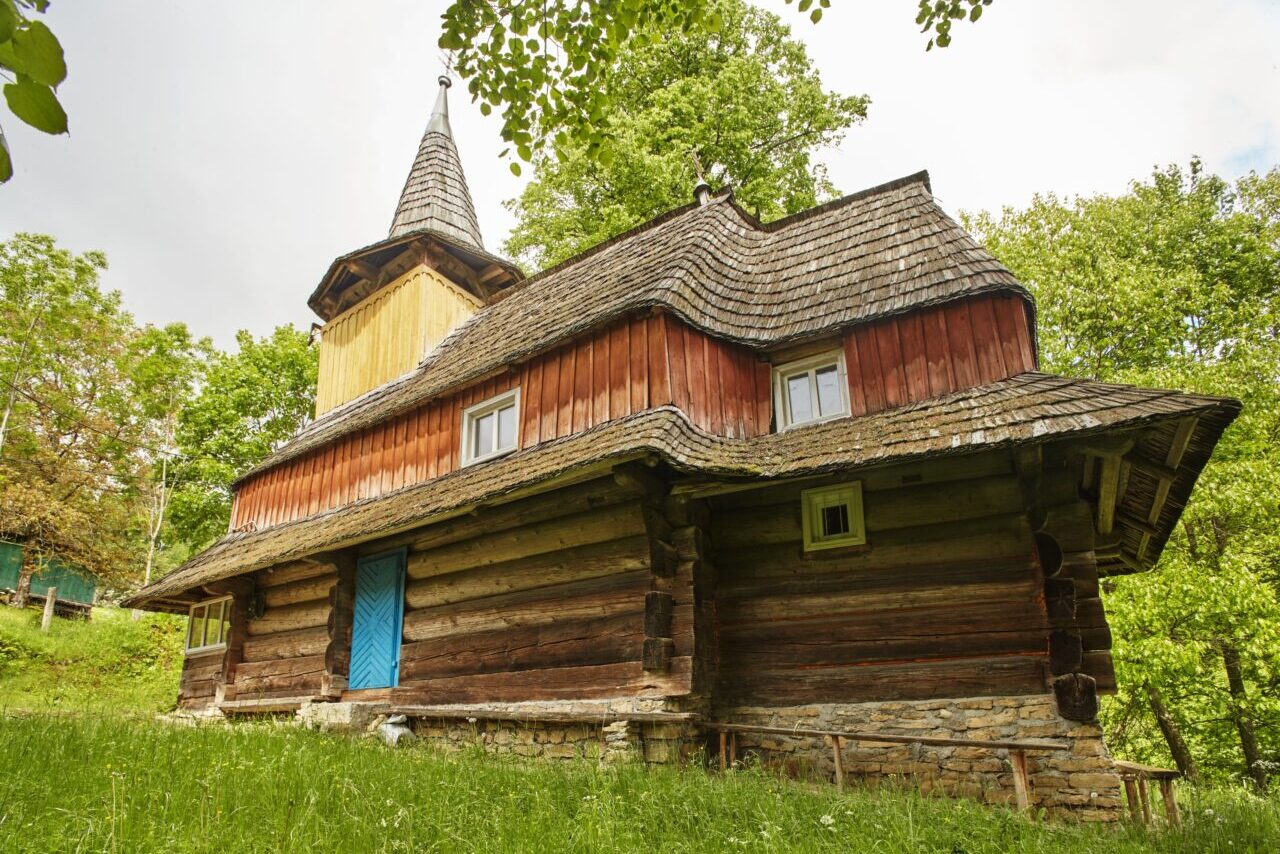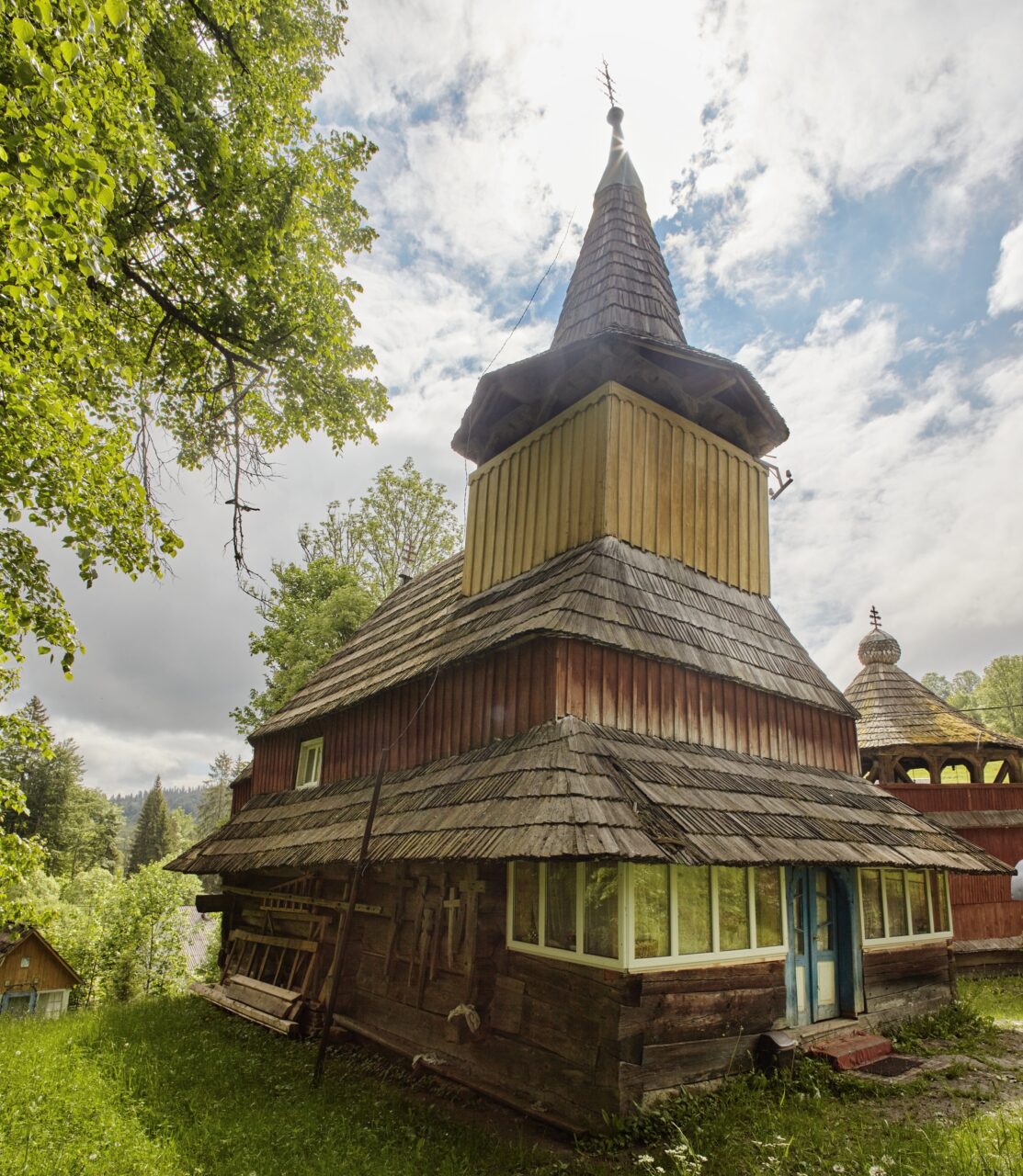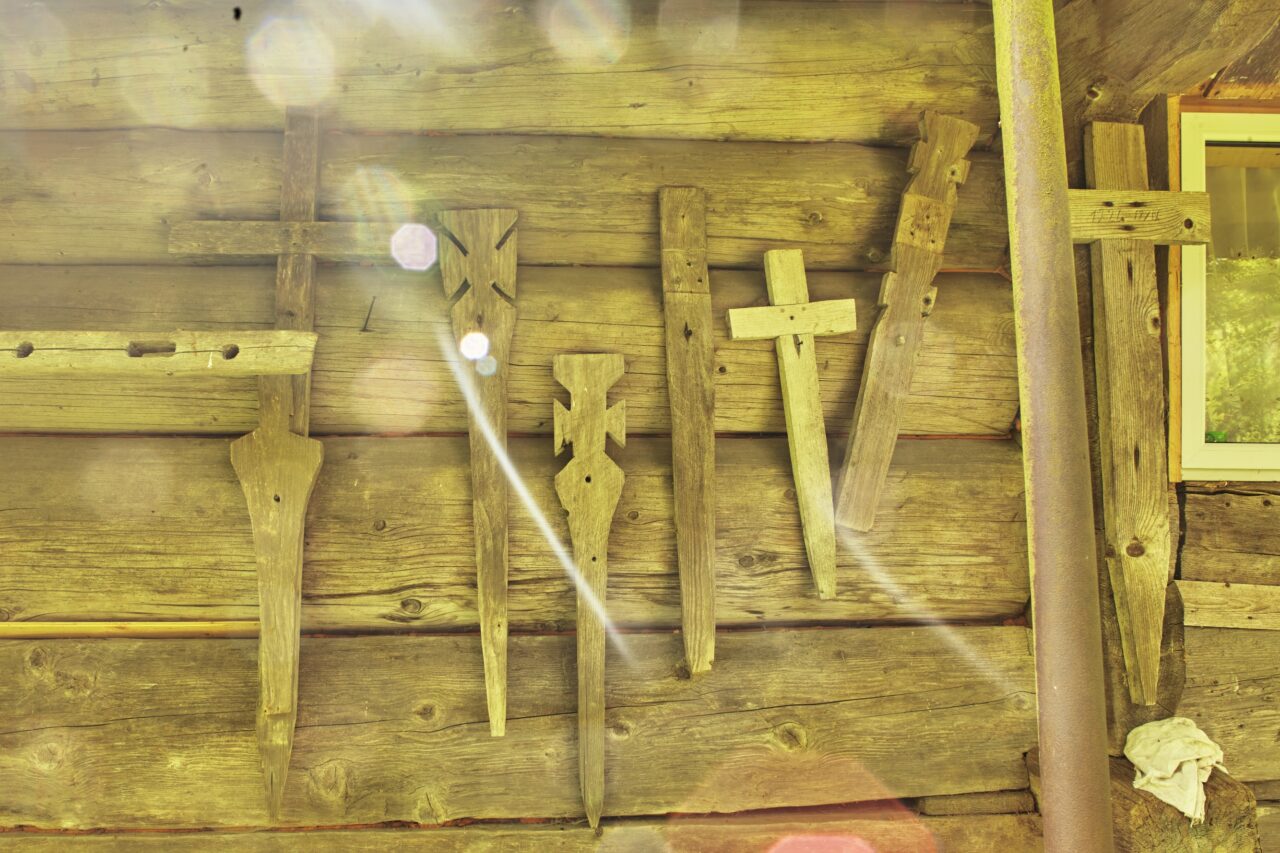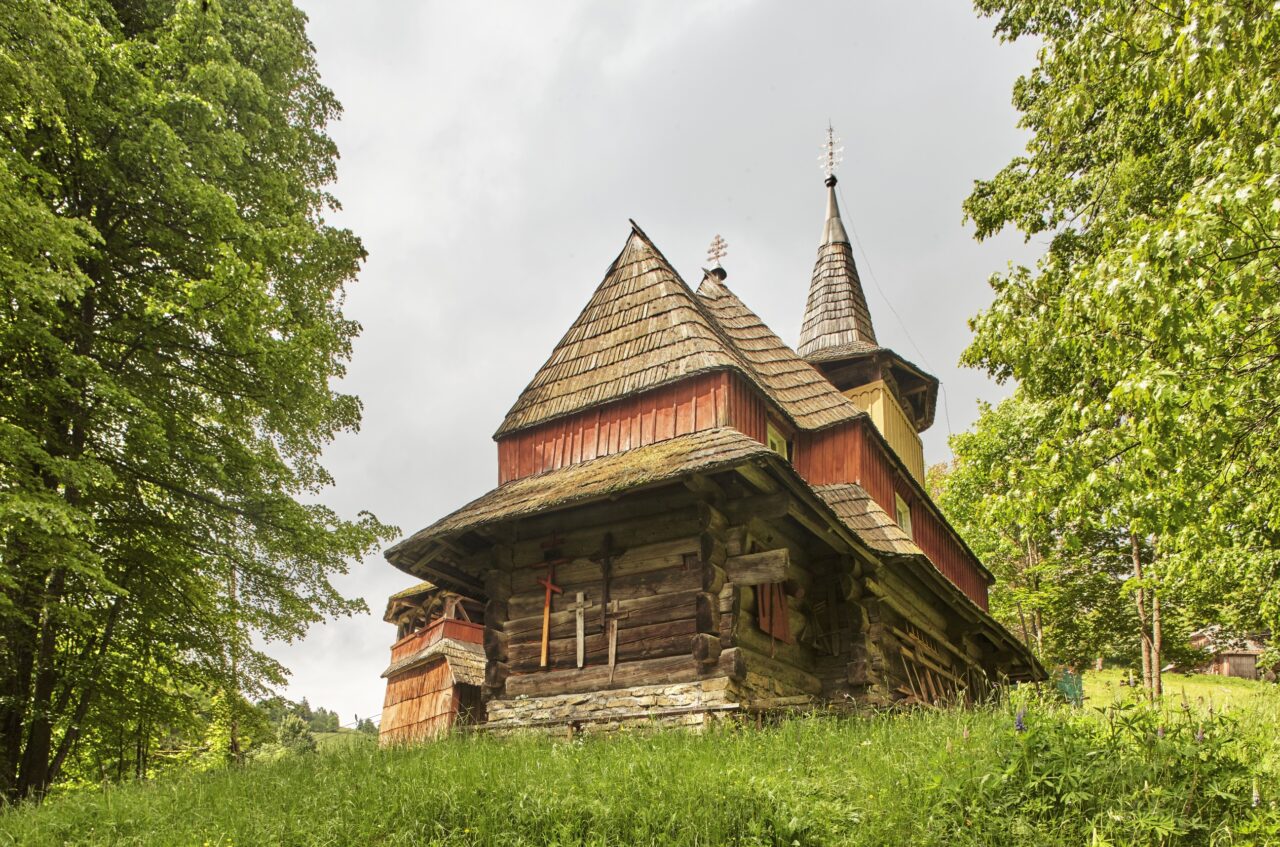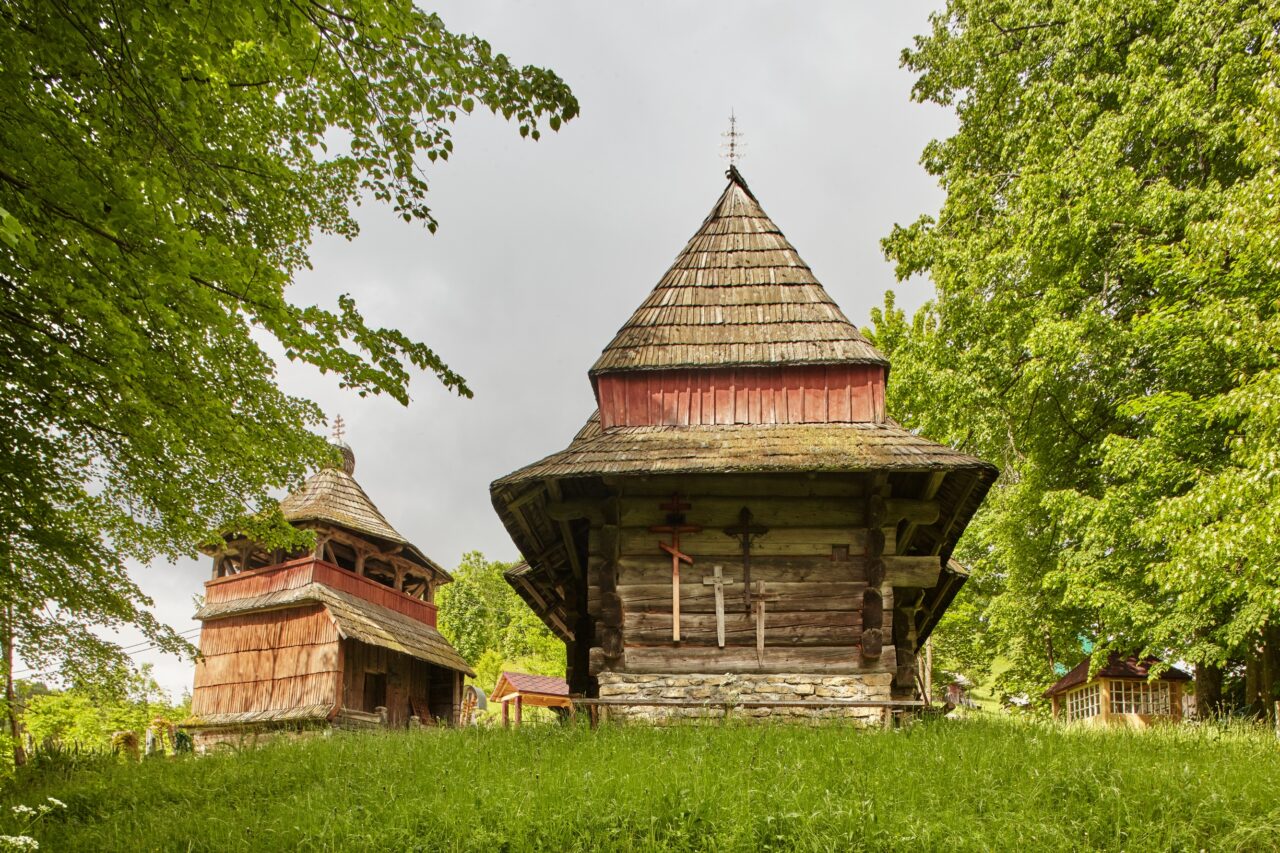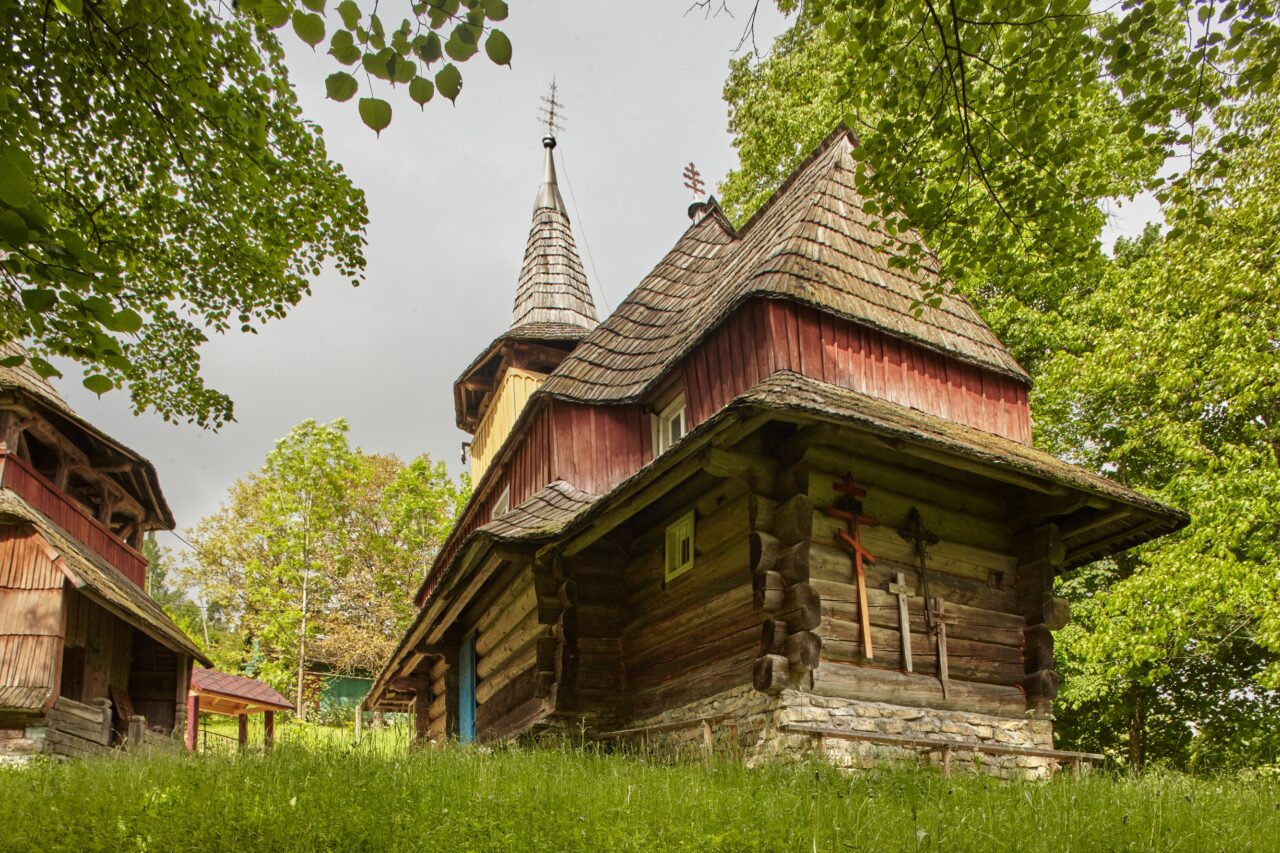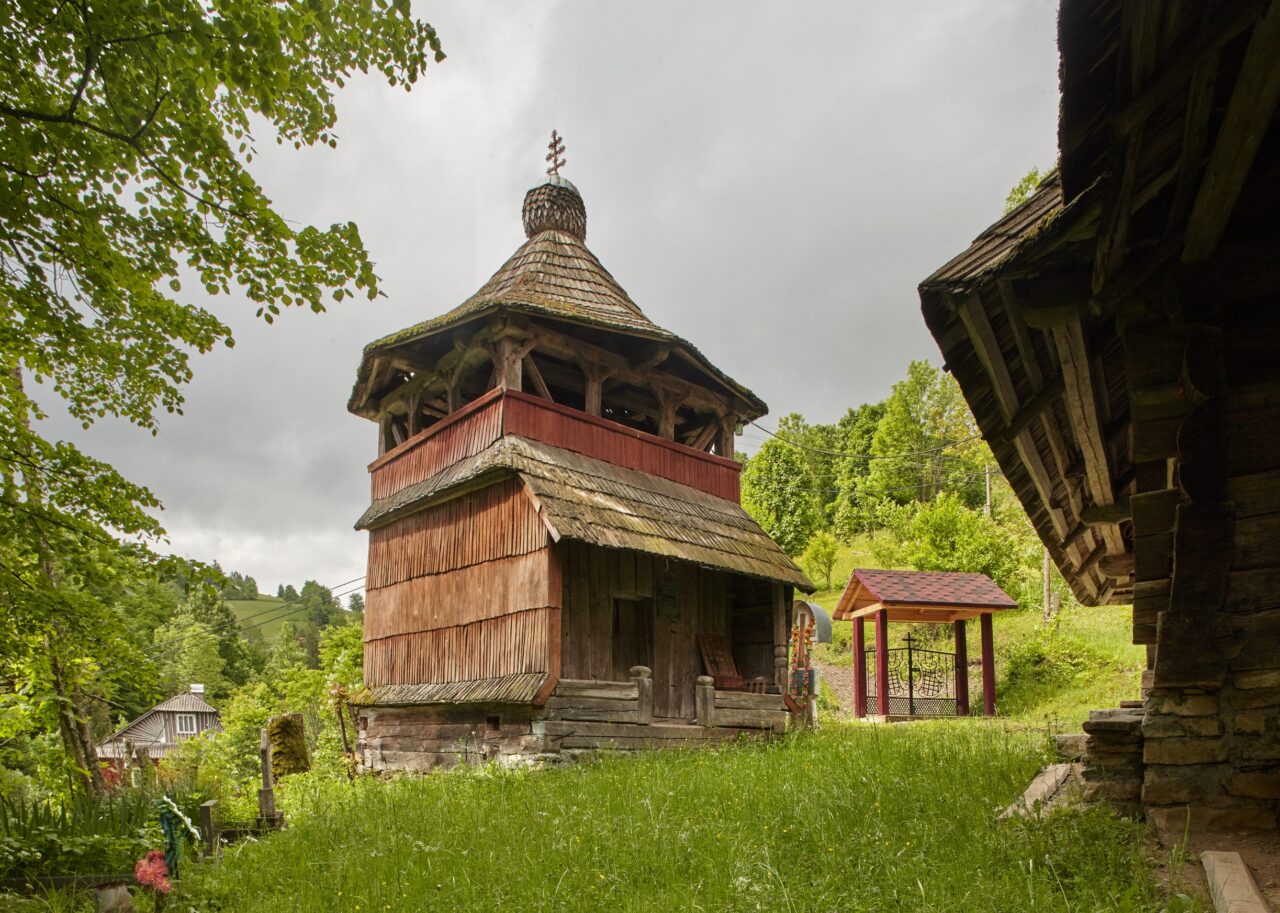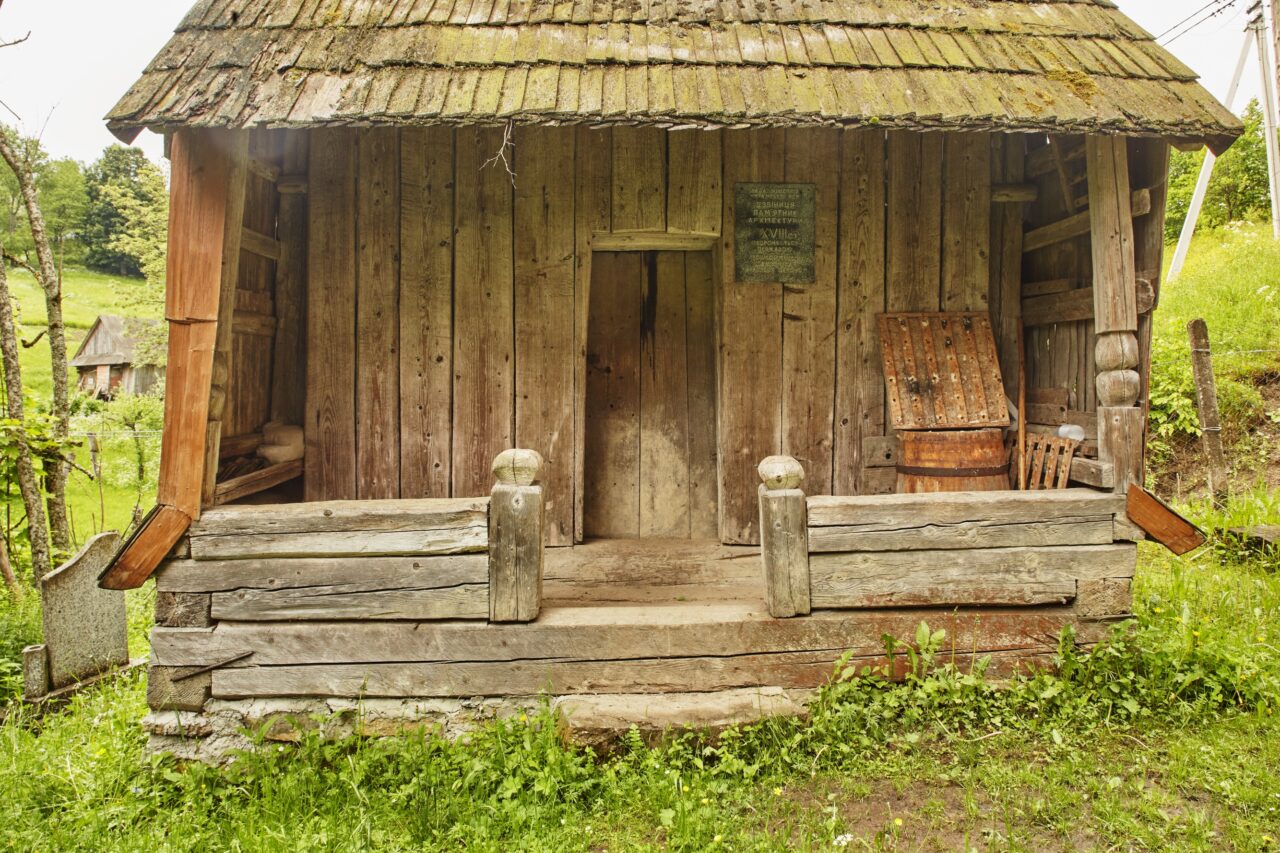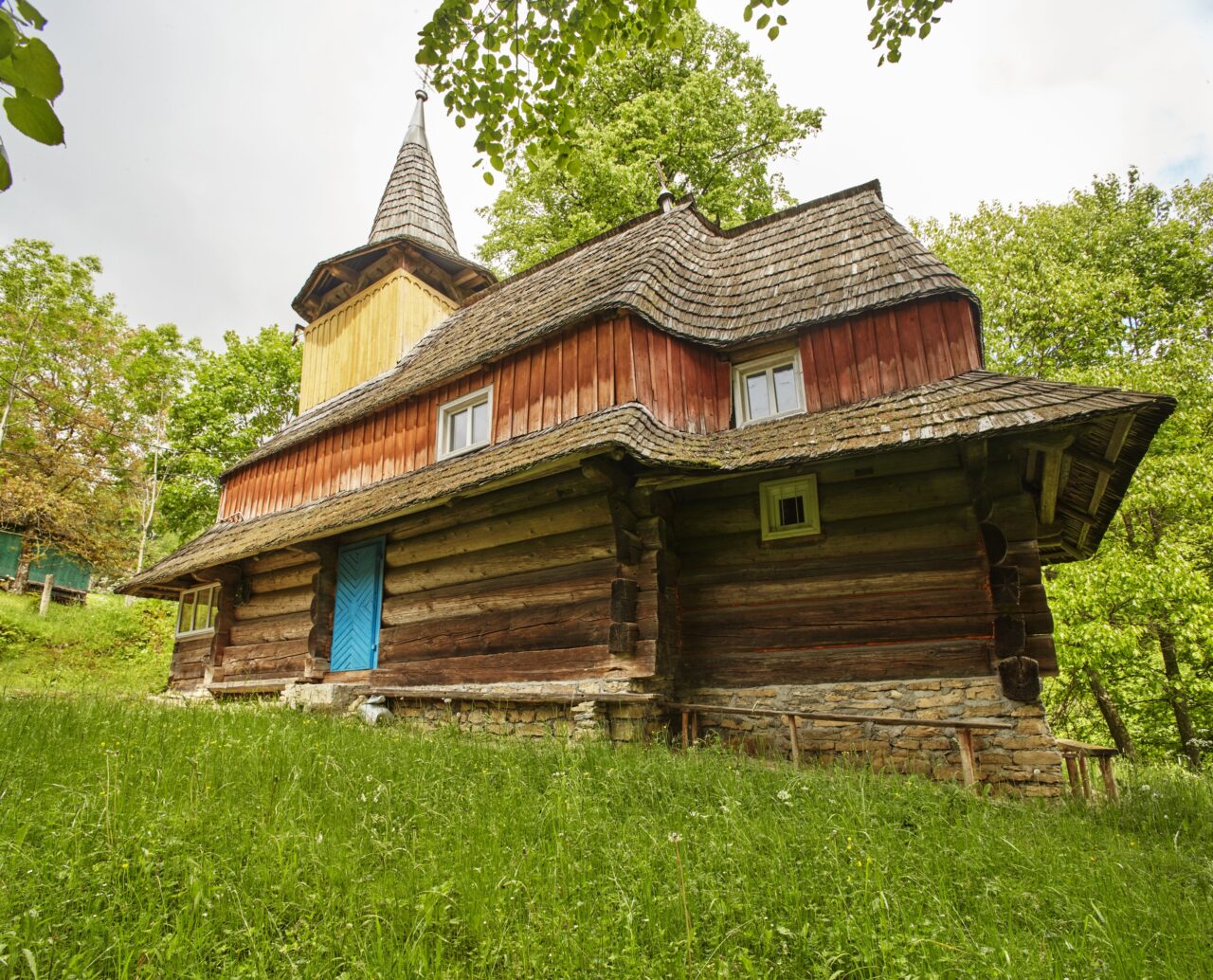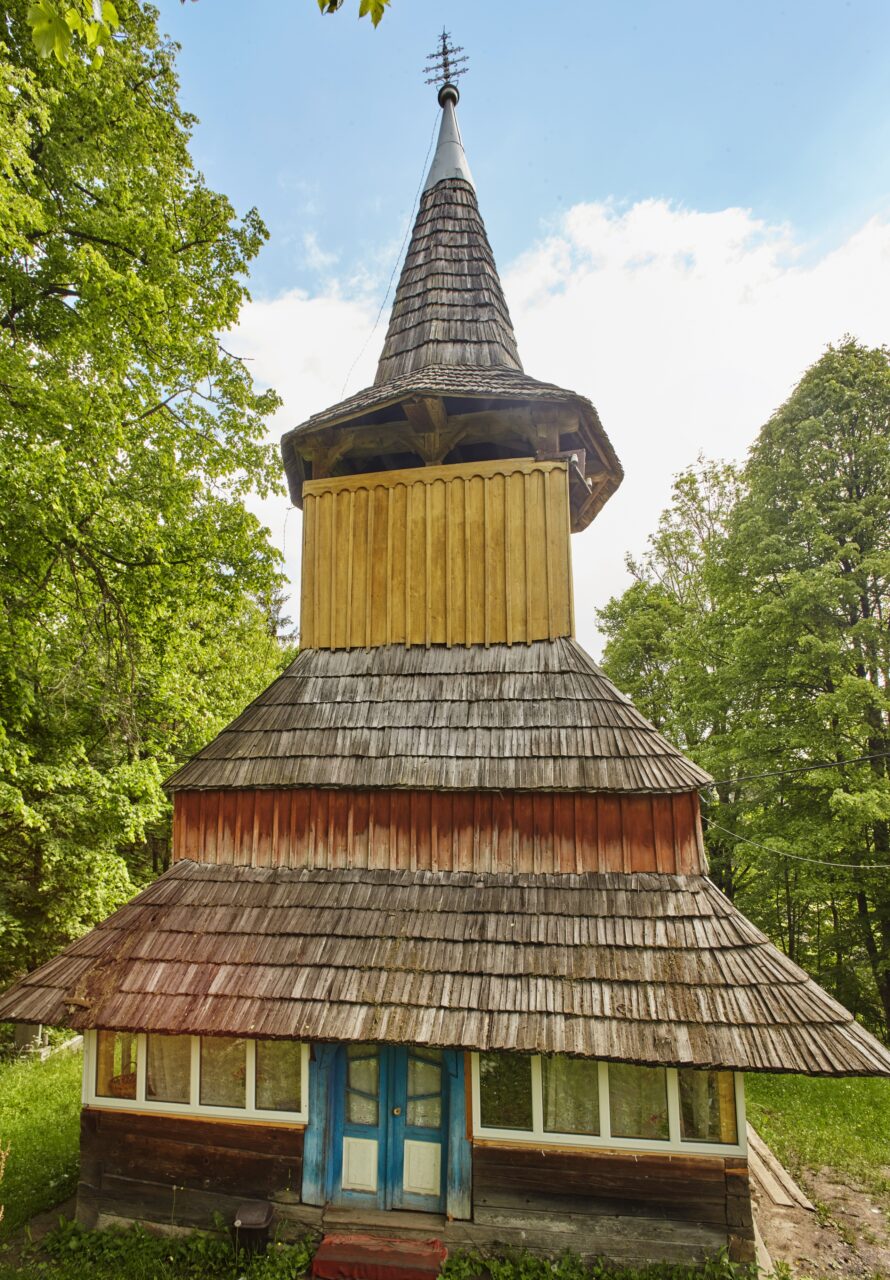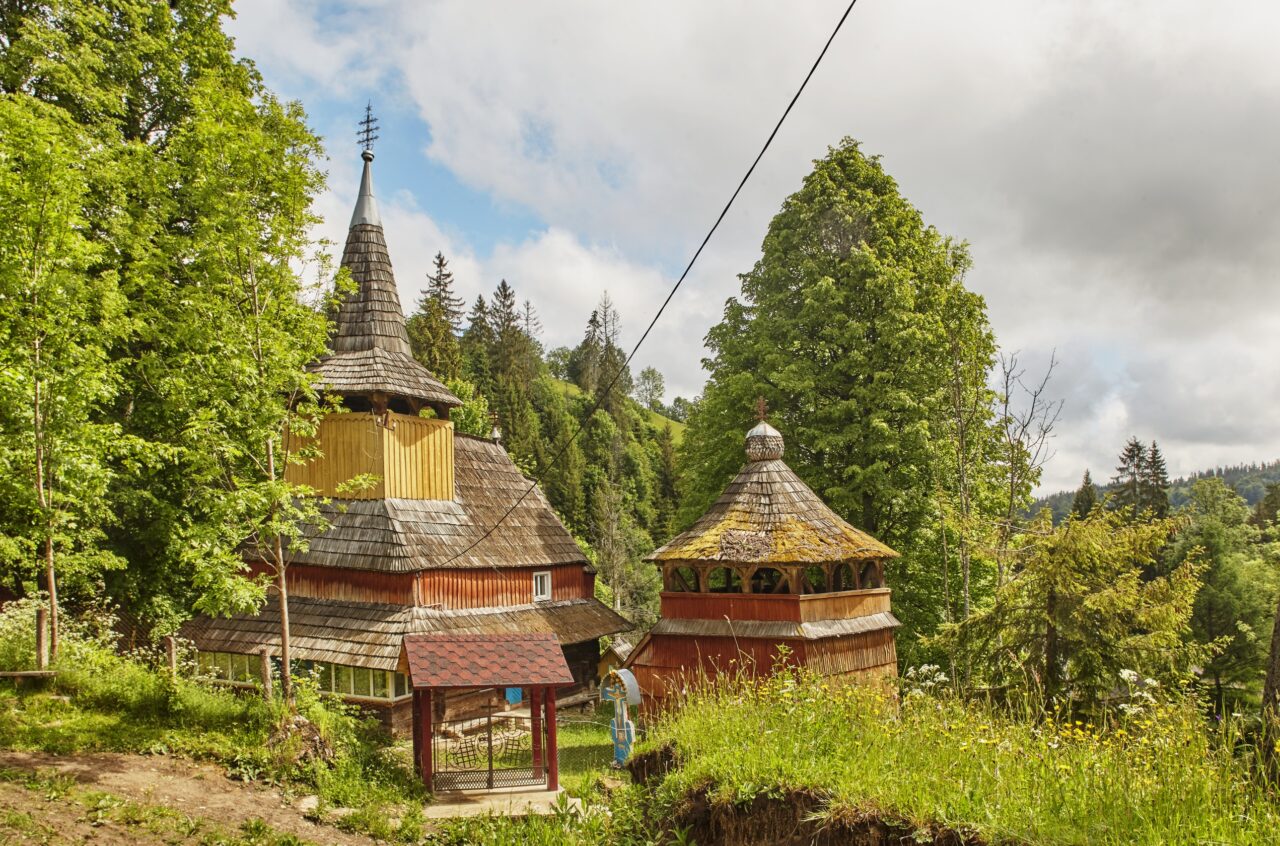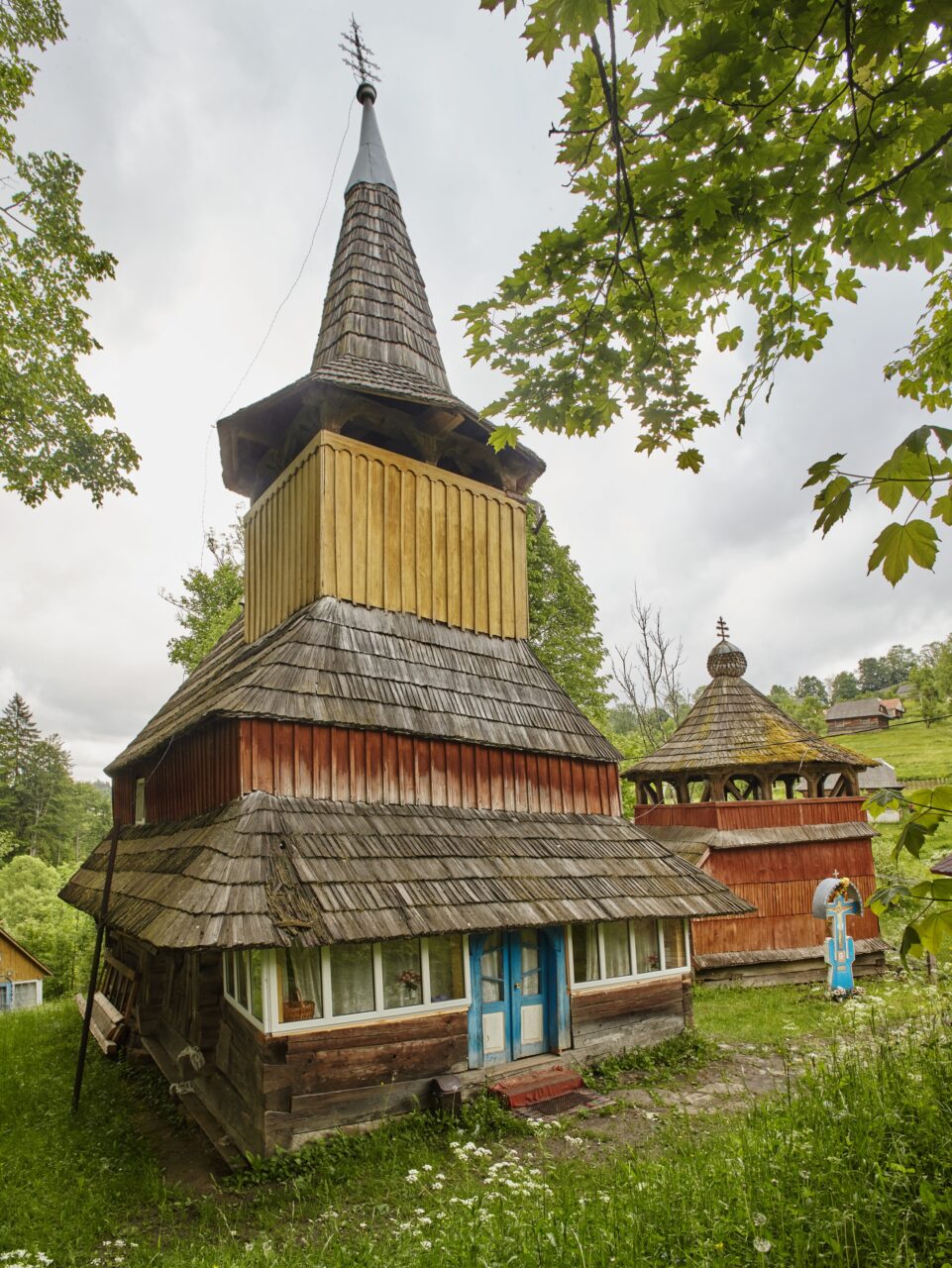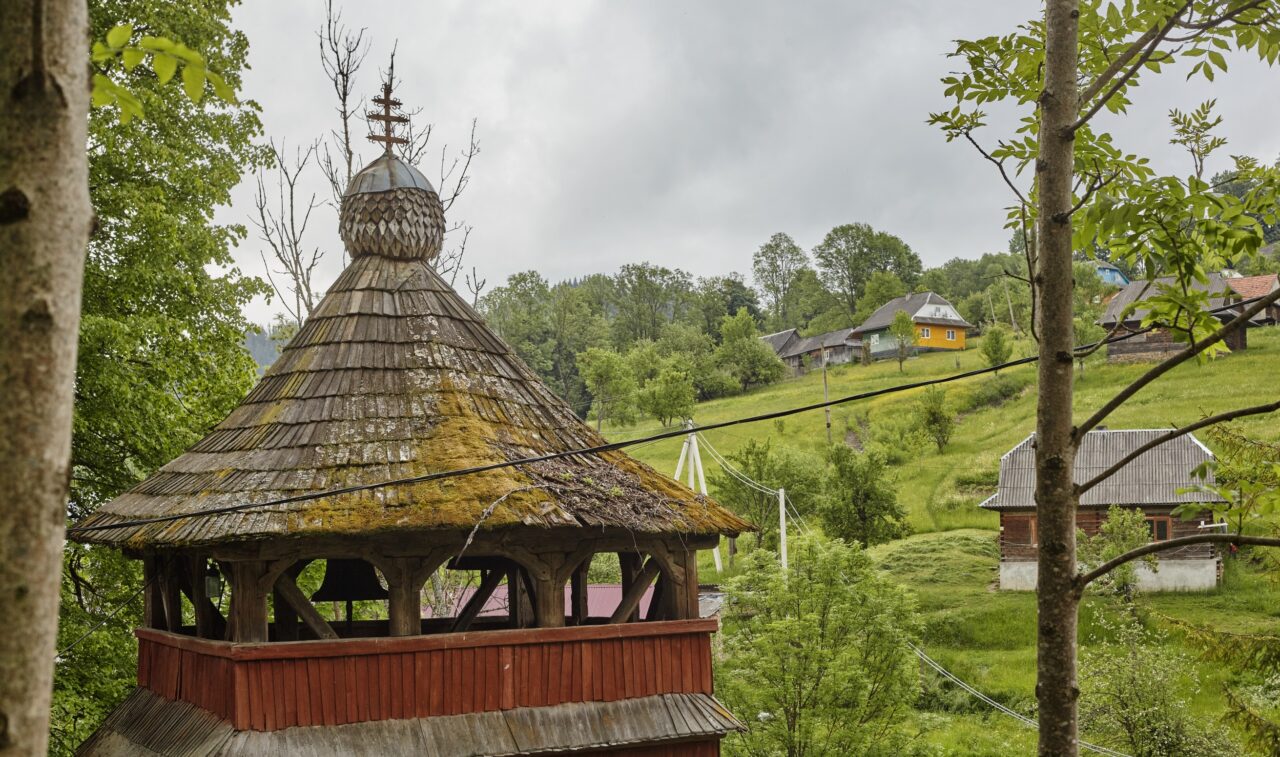An architectural monument of national importance.
It is included in the UNESCO list and stated to be a monument possessing a historical, cultural and architectural value.
The wooden church is believed to have been built in 1751, although there are its earlier mentions. There are some records that this year the temple required repair. The current location in the Rekity village is the third one, i.e. it was twice moved and rebuilt.
Originally the church was built in the Boiko style; it is characterized by monumental features. The shrine is two-log with a gabled roof, built with the use of spruce beams, without a single nail.
The completion of the roof lantern posts is made in the Gothic style. The narthex has a flat ceiling and the altar frame and the nave overlap the trapezoidal vault. The narthex western wall borders with a single-story gallery. There are no decorative details on the temple facade. During the initial construction the porch with wooden columns was not glazed. Since the area, where the church is located, has a steep slope, an additional log house was erected under the eastern wall of the shrine. The St. Nicholas’ church was quite large, as it was able to contain up to 110 people. There are three icons on church iconostasis: Nicholas, Annunciation and the twelve apostles, dating back to the 18th century.
Next to the church there is a frame bell tower, which was built in the 17th century and rebuilt in the 18th century.
The bell tower lower tier is built with an open porch and a sloping roof.
The upper tier is decorated with a spherical head. It is low itself, there are the roof lantern posts arches and the upper tier is covered with an octagonal hip, which has a canonical shape. The ribs are concave.
Every year the church hosts a festive service in honor of the prophet Elijah, which is attended by believers from different villages.

